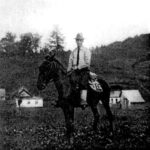Thirty-five years after its release, Tears For Fears’ iconic album, Songs From The Big Chair, continues to resonate with audiences worldwide. In a 2020 interview with Classic Pop, Roland Orzabal reflected on the album’s enduring legacy, the stories behind its hit singles, and the band’s journey during that pivotal era.
 Tears For Fears Songs From The Big Chair album cover featuring band members Curt Smith and Roland Orzabal
Tears For Fears Songs From The Big Chair album cover featuring band members Curt Smith and Roland Orzabal
The Unbelievable Milestone: 35 Years of Songs From The Big Chair
Orzabal expressed a sense of disbelief at the passage of time since the album’s monumental release in 1985. “It was a big album and 1985 was a big year,” he acknowledged. While the album’s significance remains firmly embedded in their collective consciousness, the sheer duration of 35 years felt surprisingly long.
The Accidental Hit: The Genesis of “Shout”
Discussing the origins of their anthemic track “Shout,” Orzabal described it as almost “a happy accident.” He attributed the song’s spontaneous creation to a period of creative openness in his youth. Experimenting with rhythms from songs he admired, including Talking Heads’ Remain In Light, using a LinnDrum machine, he stumbled upon the foundation of “Shout.” Combined with a Prophet synthesizer in a spacious, echo-filled room, Orzabal entered a “semi-hypnotic state,” and the song seemingly emerged effortlessly. He recognized “Shout” as a crucial turning point, retaining familiar elements from their earlier work while representing a more mature evolution from The Hurting.
Despite its initial spontaneity, “Shout” has become a staple in Tears For Fears’ live performances. Orzabal admits that while he deeply connected with the song in the past, performing it now is a different experience. “I must admit I can sing it now without feeling it,” he confessed. Nevertheless, he recognizes its enduring power, particularly for the fans, making it a perfect closing track for their shows.
“Everybody Wants To Rule The World”: From Reluctance to Global Anthem
Another signature hit from Songs From The Big Chair, “Everybody Wants To Rule The World,” had a more challenging inception. Inspired rhythmically by Simple Minds’ Waterfront and Linx’s Throw Away The Key, Orzabal initially struggled with the lyrics. Originally titled Everybody Wants To Go To War, he felt the lyrics were inadequate. Despite his wife Caroline’s appreciation for the song’s musicality, Orzabal felt creatively blocked.
Producer Chris Hughes played a pivotal role in championing the song. Hughes insisted on dedicating the final hour of each recording session to revisiting and refining “Everybody…”. It was during one of these sessions that Orzabal conceived the distinctive guitar riff and the lyrical shift to “…Rule the world.” This lyrical change sparked Orzabal’s enthusiasm, recognizing the song’s potential and ultimately leading to its global success.
American Conquest: Songs From The Big Chair Takes Off in the US
The album’s breakthrough in the United States marked a significant turning point for Tears For Fears. For Orzabal, it was his first experience of international travel and the unique phenomenon of American appreciation for British musicians at the time. He described the American music scene as typically “a notoriously closed shop,” but attributed their success to being part of a wave of British bands with compelling material arriving at the right moment. While acknowledging the hard work involved, Orzabal fondly recalled the “magical feeling” of exploring diverse American cities like Nashville, New Orleans, and Biloxi during this period of burgeoning fame.
The Wait for The Seeds Of Love and Creative Prolificacy
Following the immense success of Songs From The Big Chair, the four-year gap before their next album, The Seeds Of Love, was substantial. Orzabal reflected on this period with a tinge of regret, acknowledging that from a business perspective, a quicker follow-up would have been strategic. Ideally, he mused, they could have released two more albums during the 1980s. However, he emphasized that Tears For Fears were driven by artistic expression rather than business acumen. Despite constantly writing music, Orzabal explained their focus on creating socially relevant songs, suggesting a high bar for releasing new material.
Social Commentary and Personal Reflection in New Music
Orzabal touched upon the recurring relevance of social and political themes, drawing parallels between the politically charged atmosphere of the Songs From The Big Chair era and contemporary times. He indicated that their new music also explores the intersection of the political and the personal. He also revealed the profound personal impact of his wife Caroline’s passing in 2017 after 35 years of marriage, stating that her loss heavily influenced the emotional depth of their new material.
The Evolution of Tears For Fears and “The Tipping Point”
Addressing the progress of their then-upcoming album, Orzabal mentioned a shift in perspective, focusing on releasing individual tracks rather than a complete album. He announced the imminent release of a new single, “The Tipping Point,” a song that had been in their repertoire for a considerable time. This strategic change aimed to provide a refreshing update for both the band and their fans, allowing for more immediate feedback and a more dynamic release approach.
Discussing the sound of “The Tipping Point,” Orzabal described the modern songwriting process, often involving numerous collaborators. He likened it to “speed-dating,” where writers often presented backing tracks reminiscent of Tears For Fears’ signature hits like “Everybody Wants To Rule The World” or “Head Over Heels.” While “The Tipping Point” might contain subtle echoes of these earlier songs, Orzabal emphasized its distinct personality and evolution.
Reflecting on songwriting collaborations, Orzabal acknowledged the fruitful partnership he had with Alan Griffiths after his initial split with Curt Smith. He praised Griffiths’ prolific talent and ability to create musical sketches that facilitated rapid song development. He contrasted this period with the challenges of writing with unfamiliar collaborators in the contemporary music landscape.
Enduring Songwriting and Lyrical Depth
When asked about the most meaningful songs to perform currently, Orzabal highlighted “Woman In Chains” and “Memories Fade.” He emphasized the lasting impact of carefully crafted lyrics, expressing gratitude for the enduring quality of lyrics he wrote as young as 19. The ability to connect with and appreciate these songs decades later underscored the timelessness of their music.
In conclusion, Orzabal’s reflections provided a fascinating glimpse into the creation and enduring legacy of Songs From The Big Chair. From accidental hits to global anthems, the album’s journey and continued relevance solidify its place as a classic in music history. For fans eager to delve deeper, the 4CD/2DVD boxset of Songs From The Big Chair remains available, offering a comprehensive exploration of this iconic album.


